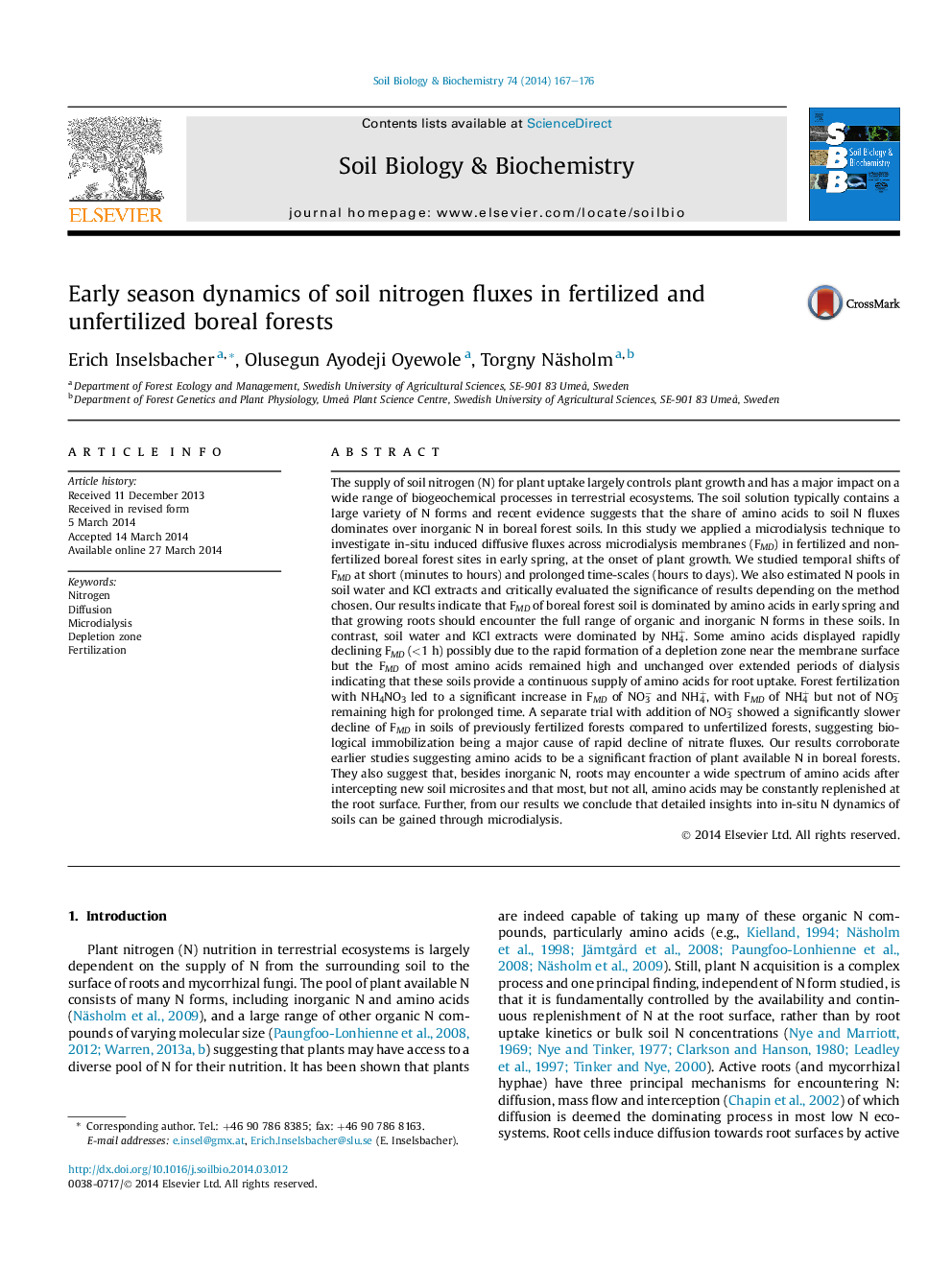| Article ID | Journal | Published Year | Pages | File Type |
|---|---|---|---|---|
| 2024624 | Soil Biology and Biochemistry | 2014 | 10 Pages |
•Nitrogen fluxes in boreal forest soils are dominated by amino acids in early spring.•After fertilization nitrate fluxes rapidly decline while ammonium fluxes remain high.•Fluxes of nitrate decline more rapidly in N poor than in N rich forests.•Fluxes of several amino acids remain high over extended period of dialysis.•This suggests high amino acid flux is not caused by severing roots and hyphae.
The supply of soil nitrogen (N) for plant uptake largely controls plant growth and has a major impact on a wide range of biogeochemical processes in terrestrial ecosystems. The soil solution typically contains a large variety of N forms and recent evidence suggests that the share of amino acids to soil N fluxes dominates over inorganic N in boreal forest soils. In this study we applied a microdialysis technique to investigate in-situ induced diffusive fluxes across microdialysis membranes (FMD) in fertilized and non-fertilized boreal forest sites in early spring, at the onset of plant growth. We studied temporal shifts of FMD at short (minutes to hours) and prolonged time-scales (hours to days). We also estimated N pools in soil water and KCl extracts and critically evaluated the significance of results depending on the method chosen. Our results indicate that FMD of boreal forest soil is dominated by amino acids in early spring and that growing roots should encounter the full range of organic and inorganic N forms in these soils. In contrast, soil water and KCl extracts were dominated by NH4+. Some amino acids displayed rapidly declining FMD (<1 h) possibly due to the rapid formation of a depletion zone near the membrane surface but the FMD of most amino acids remained high and unchanged over extended periods of dialysis indicating that these soils provide a continuous supply of amino acids for root uptake. Forest fertilization with NH4NO3 led to a significant increase in FMD of NO3− and NH4+, with FMD of NH4+ but not of NO3− remaining high for prolonged time. A separate trial with addition of NO3− showed a significantly slower decline of FMD in soils of previously fertilized forests compared to unfertilized forests, suggesting biological immobilization being a major cause of rapid decline of nitrate fluxes. Our results corroborate earlier studies suggesting amino acids to be a significant fraction of plant available N in boreal forests. They also suggest that, besides inorganic N, roots may encounter a wide spectrum of amino acids after intercepting new soil microsites and that most, but not all, amino acids may be constantly replenished at the root surface. Further, from our results we conclude that detailed insights into in-situ N dynamics of soils can be gained through microdialysis.
